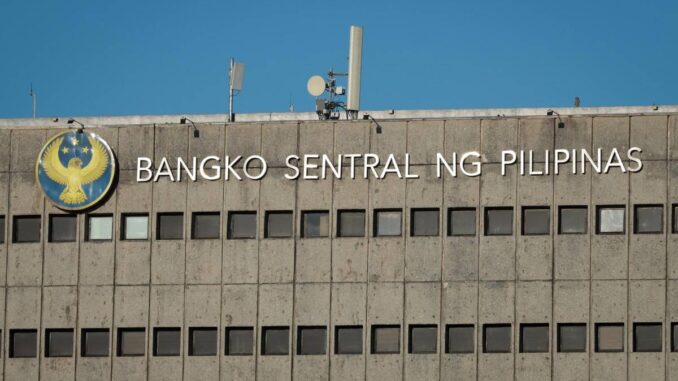
THE Bangko Sentral ng Pilipinas (BSP) will likely cut bank reserve requirements by 200 basis points (bps) next year, analysts said, following last week’s announcement of a 250-bps reduction set to take effect on October 25.
“In our view, BSP’s goal is to reach five percent in 2025, so we would expect more RRR (reserve requirement ratio) reductions next year, owing to our expectation that headline inflation remains within BSP’s target,” Nomura economist Euben Paracuelles said.
The BSP on Friday cut the reserve ratio for universal and commercial banks and nonbank financial institutions with quasi-banking functions (NBQBs) by 250 bps to 7.0 percent.
That for digital banks was lowered by 200 bps to 4.0 percent for digital banks, while those for thrift bank and rural banks and cooperative banks (RCBs) were cut by 100 bps to 1.0 percent and zero percent, respectively.
With inflation expected to stay on target over the next two years, the BSP said that it would review the need for further reserve requirement cuts to better match regional standards in the medium term.
Paracuelles estimates that the latest reduction would inject around P310 billion to P330 billion into the economy, or about 1.2 percent of projected 2024 gross domestic product (GDP).
The impact on money supply growth, however, will be smaller as the funds will mainly offset the tightening caused by the expiration of pandemic-related measures.
Chinabank Research, meanwhile, said the liquidity boost could fuel a bond market rally by increasing demand, which would further push down market interest rates.
“With the improved growth prospects for the Philippine economy, foreign investors may be encouraged to invest in local financial assets, which could lift the local currency,” it added.
Chinabank also noted that the lower reserve requirement would reduce banks’ costs, leading to lower lending rates, which could encourage businesses to borrow for expansion and capital projects, boosting GDP growth.
The analysts said the lower RRR would not significantly impact both inflation and central bank policy decisions.
Paracuelles still expects the BSP to cut key interest rates by 25 bps at both its October and December meetings, followed by a total of 75 bps in the first three meetings of 2025. This would bring the policy rate to 5.0 percent by May next year.
He noted that the BSP views RRR cuts as operational adjustments to emphasize that these do not signal a shift in monetary policy.
“Nonetheless, we think the RRR reduction announced this early reflects BSP’s greater confidence on the inflation outlook, which is also supporting its easing cycle,” Paracuelles said.
“With inflation remaining on a downward path, BSP has scope to further remove the restrictiveness of its monetary stance,” he added.
He said that the start of the US Federal Reserve’s cutting cycle should also encourage more BSP rate cuts from the BSP, but added that it was unlikely to opt for smaller cuts rather than the jumbo 50 bps announced last week.
Chinabank Research also believes that the RRR cut will not be inflationary as the BSP can also manage excess money supply through its monetary operations.
“The BSP could still consider a policy rate cut in October if the inflation data remains favorable,” it added.


Be the first to comment